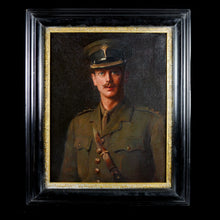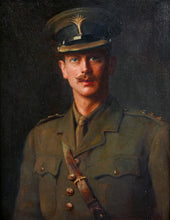Welsh Guards - Portrait of Captain Hume Buckley Roderick, 1917
Adding product to your cart
45.5cm x (17.9in) x 35.5cm (13.9in)
Oil on canvas. Quarter length portrait of Hume Buckley Roderick in service dress uniform of the Welsh Guards. Contained in period ebonised and gilt frame.
Read more

Captain Hume Buckley Roderick, Welsh Guards, (1887-1917) was the son of Lieutenant-Colonel Buckley Roderick, a Llanelli RFC forward and Welsh international. Hume was educated at Rugby School, practised as a solicitor in his father’s firm at Llanelli. He turned out for the Scarlets for six seasons and was commissioned Second Lieutenant in the Pembrokeshire Battalion of the Welsh Regiment (TF) in 1908. He was mobilised on the outbreak of the First World War and while serving with the 1/4th Welsh in South Wales ‘made a gallant attempt to save the life of one of his men from drowning’ (Brecon county Times, 13.12.1917). Although he had not fully recovered, he went with his battalion to Gallipoli but was spared the landing at Suvla Bay and subsequent attack of 9 August 1915 which saw mass casualties in the 53rd Welsh Division. On his return home he transferred to the newly created Welsh Guards. In November 1916 shortly before joining the 1st Battalion in France and taking command of No. 3 Company, he married Frances Garnons-Williams, the daughter of the Lieutenant-Colonel R.D. Garnons-Williams, who was killed at Loos the previous year. In July 1917 he was wounded at Ypres, but remained at the front, and moved with the Battalion from Ypres to positions near Cambrai, where the Welsh Guards fought at the Battle of Cambrai throughout November and December 1917. He was killed in action at Cambrai on 1 December 1917, whilst leading a platoon in a charge against a German machine gun post. He is buried Gouzeaucourt New British Cemetery, and was remembered in one obituary notice as a keen dog fancier, who maintained ‘fine kennel of sealyham terriers’.






